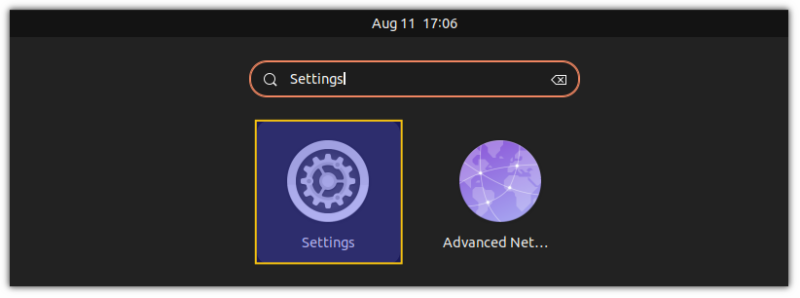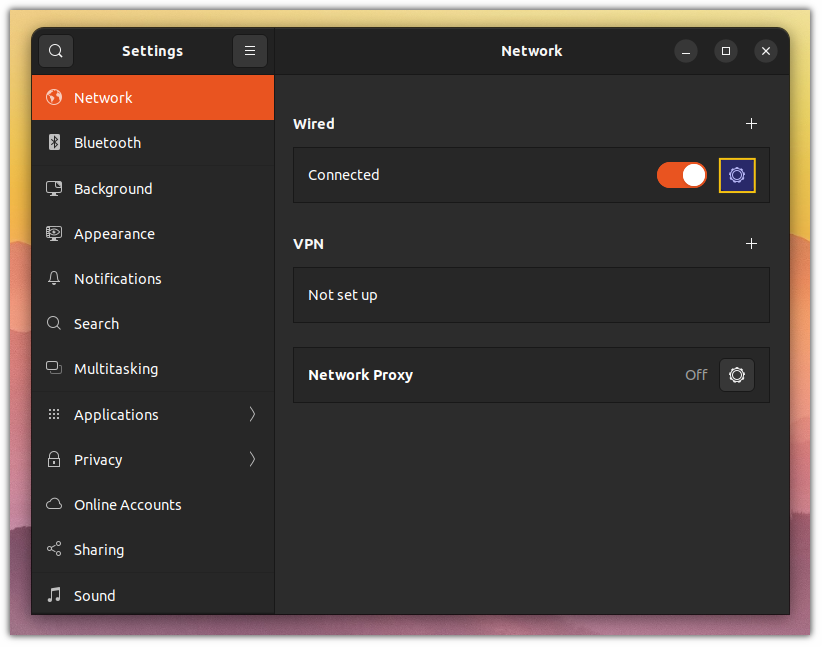
When you are learning networking or troubleshooting it, you would need to know the MAC address.
A computer can have more than one MAC address. It is because the MAC address is a core part of networking, and each networking peripheral device has its own MAC address.
So, your WiFi card has a MAC address, and so does the Ethernet (LAN) port. Even the Bluetooth has one.
The MAC address, also known as the physical address, is a 12-digit hexadecimal code (48-bits) and is represented as MM:MM:MM:SS:SS:SS
In this tutorial, I’ll share the steps for finding the MAC address of your desired networking interface in Linux. I’ll show both command line and GUI methods.
Method 1: Find MAC address using command line
There are serveral Linux networking commands that can be used to get the MAC address of the WiFi or LAN cards.
Basically, use the same command that you use for checking the IP address.
Open up your terminal and use the following command, and it will bring the address of the present network cards in your system:
ip linkAnd you’ll be met with the following output:

Generally, the wireless device names will be wlan0, wlan1, wlan2, wlo0, wlo1, and wlo2, whereas the Ethernet (wired device) will probably have eth0, eth1, eno0, eno1,enpls0, or enpls1.
You can find the MAC address of each device at the last line of the device description, followed by link/ether and it’s 52:54:00:5c:92:bf in my case.
Get the MAC address of Bluetooth
As I mentioned earlier, all networking devices have a physical address. If you want to see the MAC address of your Bluetooth adapter, you can use this command:
hciconfigYou can see it beside the BD Address field.
sagar@itsfoss:~$ hciconfig
hci0: Type: Primary Bus: USB
BD Address: DC:41:A9:FB:7A:C4 ACL MTU: 1021:4 SCO MTU: 96:6
UP RUNNING
RX bytes:17895787 acl:275 sco:250783 events:298882 errors:0
TX bytes:303664302 acl:295384 sco:249895 commands:3380 errors:0You can also use the bluetoothctl command here.
Method 2: Get MAC address using GUI
If you’re afraid of using the terminal you can use the network settings to get the MAC address details.
I am using Ubuntu with the GNOME desktop environment. If you use some other desktop environments, the screenshots may not look the same.
First, search for settings in the system menu and open the first result.

Now, for the left menu bar, select Network and click on the little gear icon located near to wired network toggle. Even if you’re not connected to a wired network, you can still follow the same approach.

If you’re on Wi-Fi, there will be an option for Wi-Fi in the left menu bar. From there, you have to follow the same approach (clicking on the gear icon) to get your MAC address.
Once you click on the gear icon, you’ll be met with details of the selected network interface. Here, the MAC address is given as the Hardware address.

Here you have it in the easiest way possible!
Final Words
Did you know that the first half of hexadecimal code (24 bits) is used to represent the manufacturer of your network adapter?
Finding a MAC address in Linux is quite easy as you have seen it here. On the same note, you may like to learn about changing the MAC address in Linux.

Let me know if you have any questions or suggestions.
It's FOSS turns 13! 13 years of helping people use Linux ❤️
And we need your help to go on for 13 more years. Support us with a Plus membership and enjoy an ad-free reading experience and get a Linux eBook for free.
To celebrate 13 years of It's FOSS, we have a lifetime membership option with reduced pricing of just $76. This is valid until 25th June only.
If you ever wanted to appreciate our work with Plus membership but didn't like the recurring subscription, this is your chance 😃



